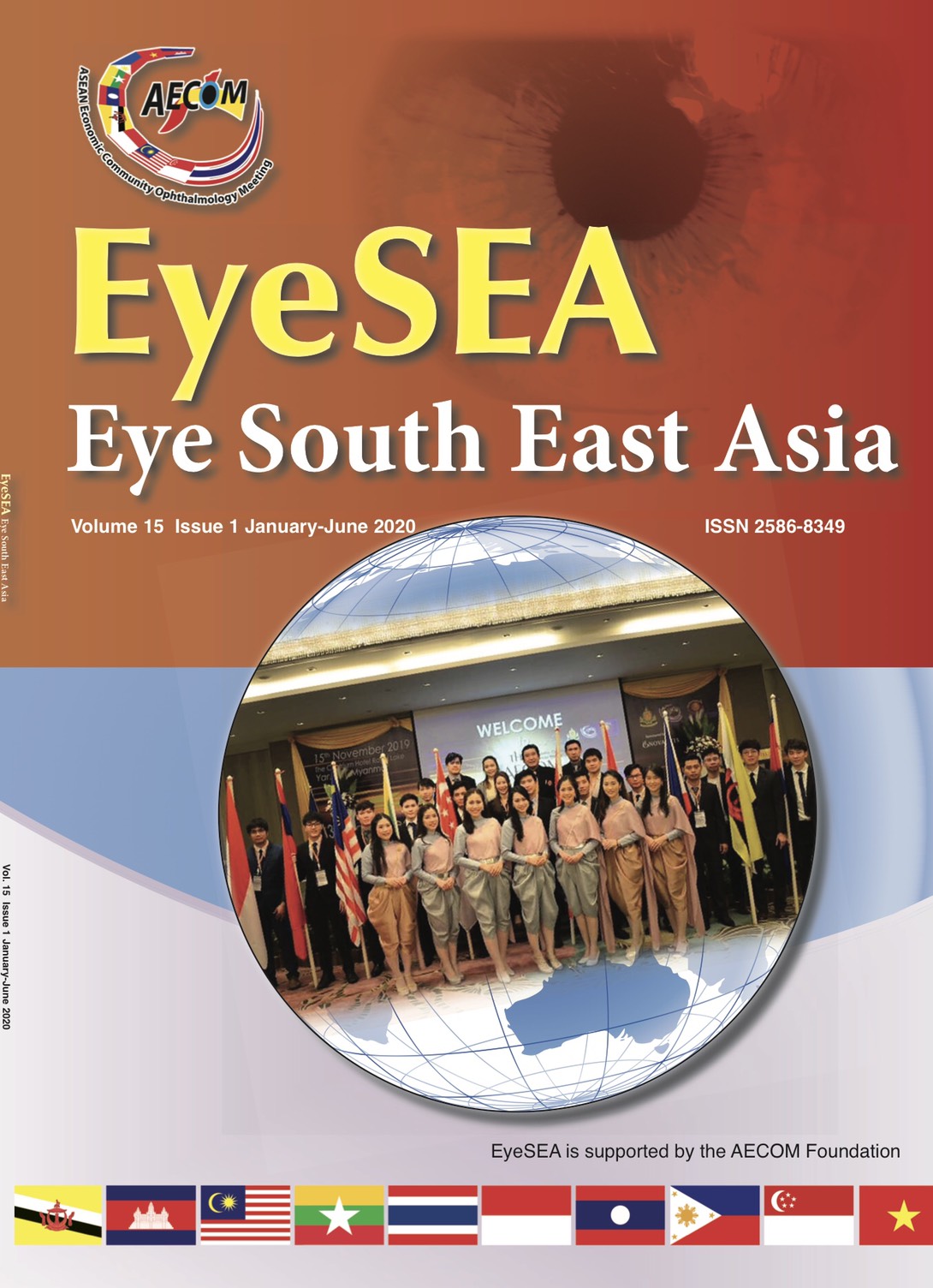PAEDIATRIC NEUROMYELITIS OPTICA
Main Article Content
Abstract
Title: To report a case of paediatric Neuromyelitis 0ptica (NMO)
Objective: To report a case of paediatric Neuromyelitis 0ptica (NMO)
Method: Case report
A 14-year-old girl presented with right eye blurring of vision for 4 days associated with acute bilateral lower limb weakness and urinary incontinence. At presentation, visual acuity on the right eye was counting fingers and left eye vision was 6/9 with positive relative afferent pupillary defect. Light brightness and red saturation were reduced to 50% as compared to left eye with right central visual field defect. The anterior segments and funduscopy of both eyes were normal.
On systemic examination, there were upper motor neuron signs and segmental sensory loss from T1-L2. Powers for both upper and lower limbs were reduced with hyperreflexia. Blood investigation for Aquaporin 4 Ab was positive. Magnetic Resonance Imaging spine showed longitudinal extensive transverse myelitis.
She was given intravenous methylprednisolone 1gram daily for 5 days followed with tapering dose of oral prednisolone. She completed 5 cycles of plasmapheresis. Subsequently, she has near complete recovery with normal lower limb power. Her right eye vision has improved significantly to 6/9. She completed 3 cycles of Rituximab infusion.
Conclusion: This case report highlights the importance in early diagnosis of paediatric neuromyelitis optica and prompt treatment will ensure better prognosis of disease
Conflict of interest: The authors declare no conflict of interest.
Keyword: Paediatric, Neuromyelitis optica, Immunomodulatory, plasmapheresis
Article Details
References
2) Karolina Dembinski, Maria Gieron-Korthals, Carlos R. Martinez, and Lisa Rodriguez, “Neuromyelitis Optica in Child: Diagnostic and Therapeutic Challenges,” Case Reports in Pediatrics, vol. 2013, Article ID 124929, 4 pages, 2013.
3) Tillema JM, McKeon A. The spectrum of neuromyelitis optica (NMO) in childhood. J Child Neurol 2012; 27: 1437-1447
4) Wingerchuk DM, Banwell B, Bennett JL, Cabre P, Carroll W, et al. International consensus diagnostic criteria for neuromyelitis optica spectrum disorders. Neurology. 2015 Jul 14;85(2):177-189
5) Kim SH, Kim W, Huh SY, Lee KY, Jung IJ, Kim HJ. Clnical efficacy of plasmapheresis in patients with Neuromyelitis Optica Spectrum Disorder and effect on circulating anti0aquaporin-4 antibodylevels. J Clin Neurol. 2013 Jan; 9(1): 36–42.
6) Keegan M, Pineda AA, McClelland RL, Darby CH, Rodriguez M, Weinshenker BG. Plasma exchange for severe attacks of CNS demyelination: predictors of response. Neurology. 2002 Jan 8;58(1):143-146.
7) Collongues N, de Seze J. Current and future treatment approaches for neuromyelitis optica. Ther Adv Neurol Disord. 2011 Mar; 4(2): 111–121
8) Absoud M, Lim MJ, Appleton R, Jacob A, Kitley J et al. Paediatric neuromyelitis optica: clinical, MRI of the brain and prognostic features. J Neurol Neurosurg Psychiatry. 2015 Apr;86(4):470-472
9) Collongues N, Marignier R, Zéphir H, Papeix C, Blanc F et all. Neuromyelitis optica in France: a multicenter study of 125 patients. Neurology. 2010 Mar 2;74(9):736-742
10) Wingerchuk DM, Hogancamp WF, O'Brien PC, Weinshenker BG. The clinical course of neuromyelitis optic (Devic’s syndrome). Neurology 1999; 53:1107–1114


